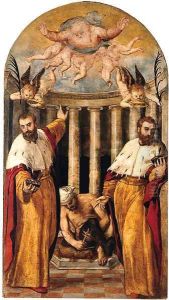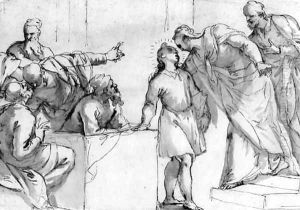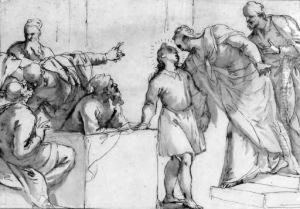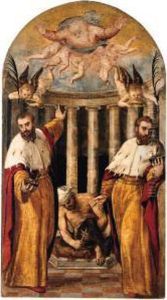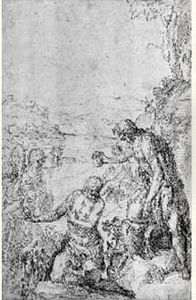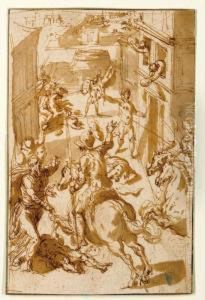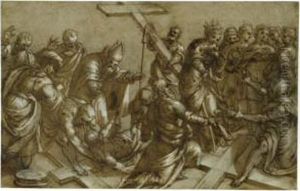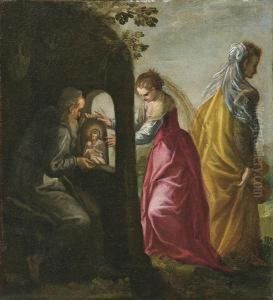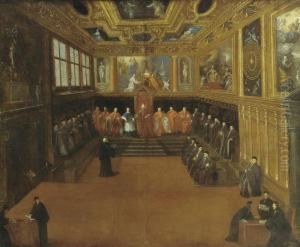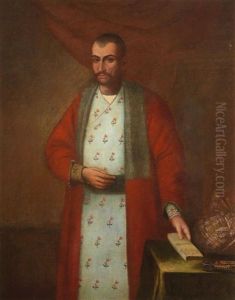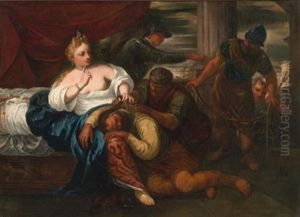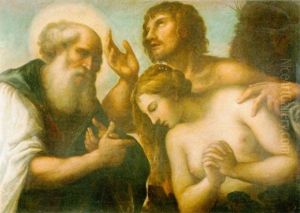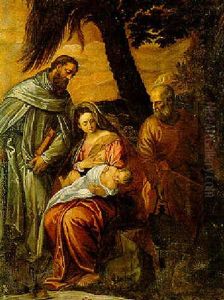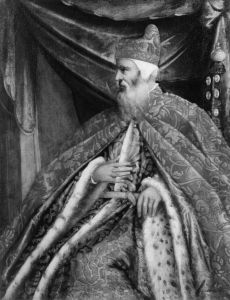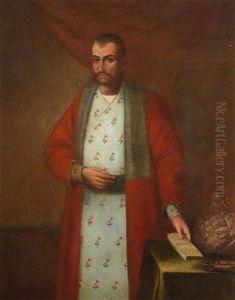Pietro Malombra Paintings
Pietro Malombra was an Italian painter of the late Renaissance period, born in Venice in 1556. He was primarily known for his work in the Venetian school, where he developed a style that reflected the transition from Mannerism to the more dynamic Baroque style that would dominate European art in the subsequent century. Malombra's work is characterized by its vibrant color palette, emphasis on light, and fluidity of form, which were all hallmarks of the Venetian tradition.
Malombra was trained in the workshop of the renowned Venetian artist Jacopo Tintoretto, which greatly influenced his artistic development. Under Tintoretto's guidance, Malombra honed his skills and adopted a dynamic approach to composition and an expressive use of color. Despite the influence of his mentor, Malombra's work also exhibited a distinct personal style, with a focus on elegance and clarity of form.
Throughout his career, Malombra received numerous commissions for religious and mythological subjects, which were common themes in the art of the period. He was particularly adept at fresco painting and also produced a significant number of altarpieces and canvases for churches and private patrons. Some of his notable works include 'The Marriage of Neptune and Amphitrite' and 'The Fall of Phaeton', both of which display his skill in depicting complex narratives and his ability to capture the grandeur of mythological scenes.
Although not as widely recognized as some of his contemporaries, such as Tintoretto and Paolo Veronese, Malombra made a notable contribution to the Venetian school and its evolution during a critical period in art history. His work bridged the gap between the late Renaissance and the early Baroque, and his influence can be seen in the works of later Venetian painters. Pietro Malombra passed away in Venice in 1618, leaving behind a legacy of artistic achievement that continues to be appreciated by art historians and enthusiasts alike.
